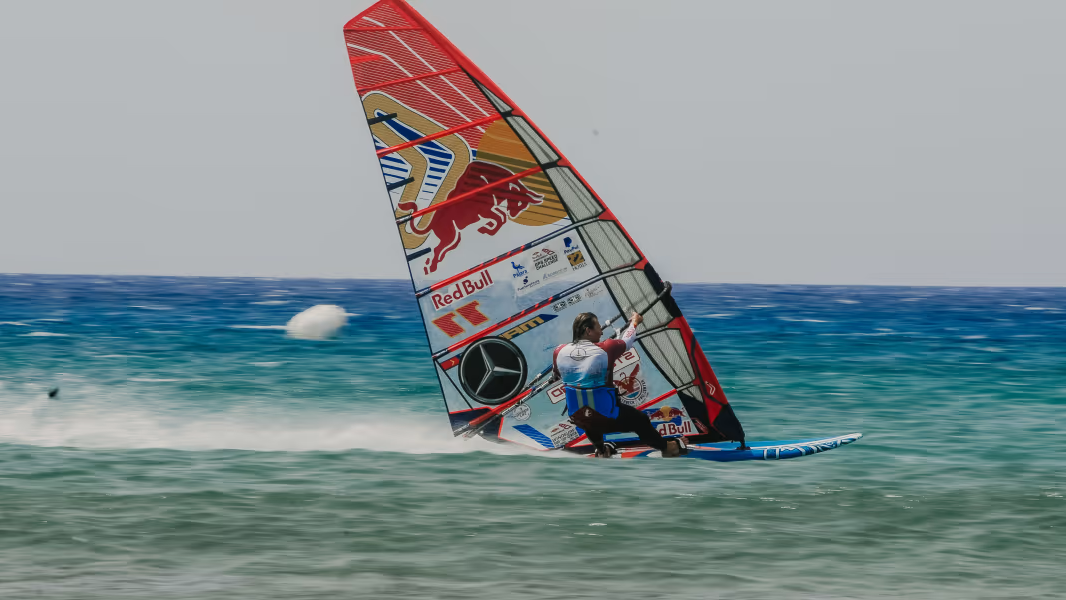
Table of Contents
Speed windsurfing merges the thrill of wave-riding with precise time measurement. Understanding its scoring adds depth to both spectator and participant appreciation.
In this article, we’ll explore “how is speed windsurfing scored”, from criteria to challenges. Whether you’re a seasoned enthusiast or new to the sport, understanding scoring nuances enriches your experience.
Join us as we delve into speed windsurfing scoring, revealing the factors shaping judgments. By the end, you’ll gain a deeper appreciation for the athleticism on display.
Scoring Criteria in Speed Windsurfing
In the realm of speed windsurfing, scoring involves a meticulous blend of objective metrics and subjective judgments to evaluate a windsurfer’s performance thoroughly. Familiarizing oneself with the criteria used in scoring unveils the intricacies of this thrilling sport.
Objective Measurement
- Precise Timing Devices: Accuracy in timing devices is crucial for speed windsurfing, as they precisely measure a windsurfer’s ride duration. These devices meticulously record the time taken by the windsurfer to traverse a predetermined distance, often marked by buoys or flags.
- Recording Top Speeds: Registering the windsurfer’s peak speed attained during the ride serves as a pivotal metric in scoring. Cutting-edge technologies like radar guns or GPS trackers are employed to ensure the reliability and precision of this recorded top speed.
Subjective Measurement
- Judges’ Evaluations: Beyond objective metrics, speed windsurfing scoring entails subjective assessments by a panel of judges. These judges scrutinize various facets of the windsurfer’s performance, including technique, style, and command over the waves.
- Style and Control Assessment: While speed remains a primary focus, judges also weigh the windsurfer’s style and control on the waves. Factors such as seamless transitions between maneuvers, fluidity of movements, and overall finesse significantly influence the final score.
By integrating objective measurements with subjective evaluations, speed windsurfing scoring aims for a comprehensive evaluation of the windsurfer’s prowess. This balanced approach ensures the recognition and reward of both technical mastery and artistic expression in the sport.
Scoring System in Speed Windsurfing Competitions
In the dynamic realm of speed windsurfing competitions, the scoring system serves as a vital component, shaping the outcomes and acknowledging standout performances. Let’s explore the intricacies of score calculation and the variables influencing it.
Point Allocation Method
Factors Considered: Speed windsurfing contests typically distribute points based on a blend of criteria, encompassing speed, style, and control. The weighting of each factor varies, reflecting the specific regulations and guidelines of the event.
Balancing Act: While speed holds precedence, judges also factor in elements like maneuver difficulty, creativity, and overall performance quality. These considerations are meticulously balanced to ensure a comprehensive evaluation of every windsurfer’s skills.
Judging Panel
- Composition and Expertise: The panel of judges comprises seasoned individuals deeply immersed in the sport. Drawing from backgrounds as former pro windsurfers, coaches, and technical experts, they bring a wealth of understanding to the table.
- Critical Role: Judges wield significant influence in determining scores, meticulously observing each windsurfer’s display and applying predefined criteria. Their impartiality and expertise are paramount, safeguarding the competition’s integrity and fairness.
Through a systematic scoring framework and the discerning eye of qualified judges, speed windsurfing competitions uphold standards of equity and precision. This guarantees that deserving windsurfers receive due recognition for their remarkable performances on the waves.

Examples of Scoring in Speed WindSurfing
Example 1: Windsurfer A executes a flawless run, achieving impressive speeds while seamlessly transitioning between maneuvers with grace and precision. Judges award high scores for the windsurfer’s exceptional technique, style, and control. Windsurfer A’s run is timed at 17.32 seconds for the designated distance, with a peak speed recorded at 32 miles per hour (51.5 kilometers per hour). The judges’ scores reflect the technical mastery and aesthetic appeal of the performance, resulting in an average score of 8.7 out of 10.
Example 2: Windsurfer B opts for a more aggressive approach, powering through the waves with raw speed and intensity. While lacking the finesse of Windsurfer A, Windsurfer B’s bold maneuvers and fearless attitude earn praise from the judges, resulting in competitive scores. Windsurfer B completes the course in 15.98 seconds, achieving a top speed of 35 miles per hour (56.3 kilometers per hour). Despite minor imperfections, the judges recognize the windsurfer’s daring performance, awarding an average score of 8.5 out of 10.
Example 3: Windsurfer C, known for their innovative style, incorporates unconventional maneuvers into their run, captivating the judges with their creativity and daring. Despite not reaching the highest speeds, Windsurfer C’s unique approach earns them commendable scores for originality and execution. Windsurfer C completes the course in 18.45 seconds, with a peak speed of 28 miles per hour (45.1 kilometers per hour). The judges appreciate the artistic flair and technical precision displayed, resulting in an average score of 8.2 out of 10.
Example 4: Windsurfer D, facing challenging wave conditions, adapts their strategy to capitalize on available opportunities, showcasing adaptability and strategic prowess. Judges recognize Windsurfer D’s tactical decision-making, reflecting in their scores despite not achieving peak speeds. Windsurfer D navigates the course in 19.75 seconds, reaching a maximum speed of 30 miles per hour (48.3 kilometers per hour). The judges value the windsurfer’s strategic approach and resilience, awarding an average score of 8.4 out of 10.
By examining these examples, we gain insight into the diverse factors that influence scoring in speed windsurfing competitions. From technical proficiency to artistic expression, each windsurfer’s performance is evaluated holistically to ensure a fair and comprehensive assessment.

Conclusion
In wrapping up, the evaluation of speed windsurfing encompasses a nuanced blend of objective measurements and subjective judgments to gauge a windsurfer’s performance. Objective standards, like precise timing and speed recording, are harmonized with judges’ appraisals of technique, style, and command over the waves.
This balanced methodology ensures that both the technical proficiency and the artistic flair of windsurfers receive acknowledgment and commendation in competitions. Through structured scoring systems and knowledgeable judging panels, fairness and precision prevail, ensuring that deserving windsurfers are duly recognized for their exceptional talents and accomplishments on the water.
Illustrative scenarios of scoring underscore the varied elements influencing assessments, ranging from flawless execution to inventive strategies and tactical adaptability, underscoring the intricate dynamics inherent in speed windsurfing scoring.
As you’re getting into the nitty-gritty of how speed windsurfing is scored, you might be wondering about its safety, right? Well, I’ve got just the thing for you! Check out this article for some insights!
